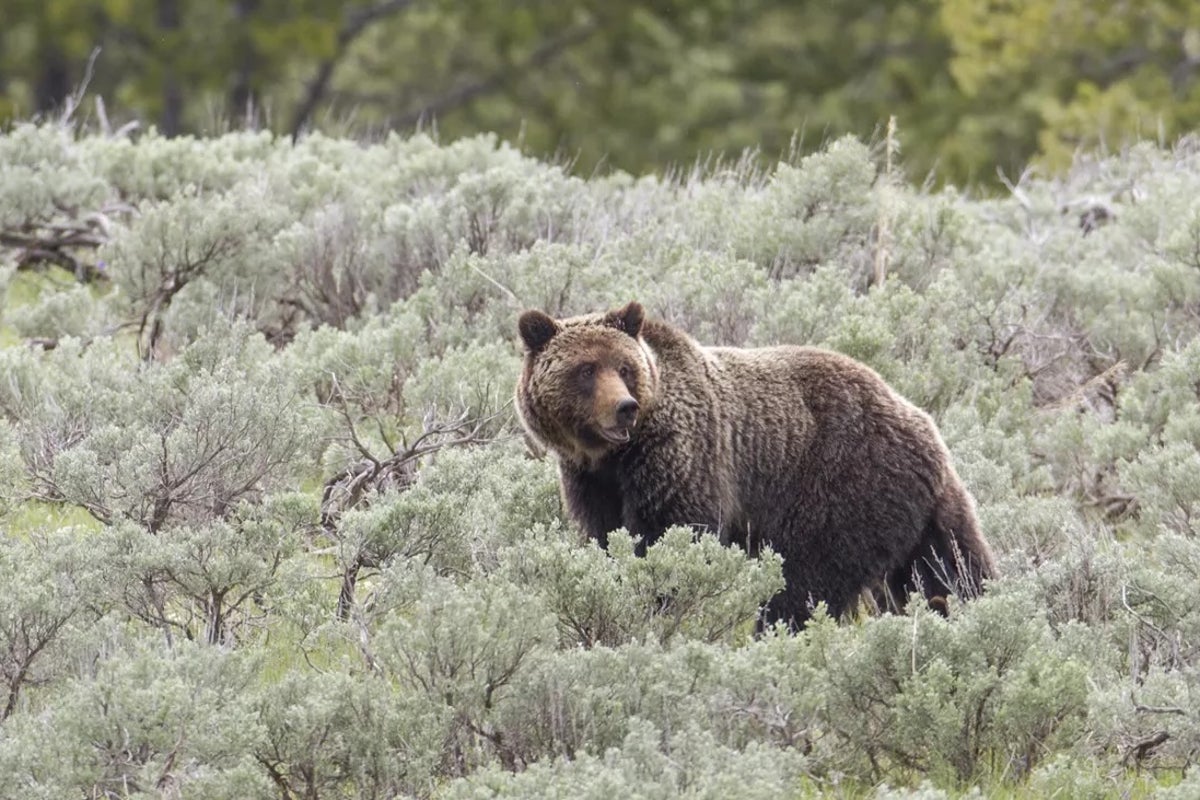
Yellowstone National Park is cautioning any visiting “tourons” to stay alert and heed its warning signs ahead of annual grizzly bear capture operations.
The western park’s biologists lure the fuzzy residents using road-kill deer and elk in order to assess their population size and health.
The grizzlies are captured in round pipe-like contraptions with sliding doors known as culvert traps, or using round foot snares that catch the bears by one of their paws. The animals are then sedated using a tranquilizer so they can be examined and fitted with radio collars to track their behavior.
The work will start next Monday and continue through October 15. Affected areas of the park – which straddles nearly 3,500 miles of Idaho, Montana, and Wyoming – will have access points marked with bright warning signs to keep visitors away.
“It is critical that all members of the public heed these signs,” the park urged in a press release.
The biologists’ work to monitor Yellowstone’s grizzly bear population is crucial to protecting the species, which nearly went extinct last century due to overhunting and human-caused habitat loss.
Bears can reach eight feet tall on their hind legs, weigh between 200 and 700 pounds, and run at a speed of up to 40 miles per hour, making them dangerous to visitors if provoked. The bears can live for up to 30 years, surviving off berries, fish, grasses, small mammals, and nuts.
Grizzlies have been listed as threatened under the Endangered Species Act since 1975 and populations have rebounded from between 700 and 800 bears in the lower 48 states to more than a couple of thousand bears today.
An estimated 1,030 grizzly bears lived across 27,066 square miles of the Greater Yellowstone Ecosystem last year, according to park officials. While the park is the bears’ permanent home, they have to deal with guests year-round. Nearly 1.7 million recreational visits were recorded at the park this year, as of June.
Unfortunately for the bears, national park visitors don’t have the best track record with following instructions, including to keep their distance from wildlife. The term “touron” emerged on social media to describe the less than intelligent acts of park tourists, including taking selfies with wild animals.
There have already been a couple of incidents at Yellowstone this year. A 30-year-old New Jersey man was gored by a bison in June following another bison injury in May involving a 47-year-old Florida man. Both men sustained minor injuries.
Encounters with grizzly bears are less common, but they do happen. One visitor was injured by a grizzly bear for every 3.5 million recreational visits between 1979 and 2022, according to researchers.
A female hiker was killed in an encounter with a grizzly bear near West Yellowstone in July 2023, and another woman sustained a minor injury in June 2020 as a mother bear was defending her cub.
Grizzlies generally mate between May and July and males can act more defensively during those months as they compete for female attention.
The park is also home to black bears, which mate in the same season. They are smaller in stature, but there are many more of them.
The park service has also issued warnings following incidents involving visitors feeding black bears at Tennessee’s Great Smoky Mountains National Park.“The park has seen an increase in incidents involving visitors feeding bears. Feeding wildlife is illegal and endangers you, other visitors and bears,” Great Smoky Mountains rangers said.
People should keep a safe distance of at least 100 yards from any bear species at all times, carry bear spray, hike in groups of three or more people, and know what to do in the case of a chance encounter.
Stand your ground and use bear spray when a charging bear is within 60 feet of you. If approached by a curious bear, do not run. Walk to the safety of the nearest car or building or slowly move away from the areas. If retreat is not an option, find other people in the area and yell at the bear.
